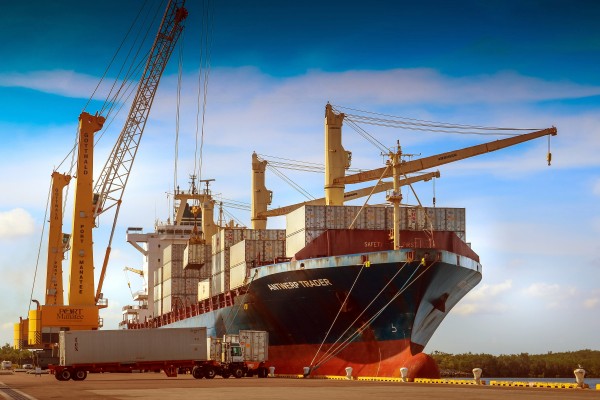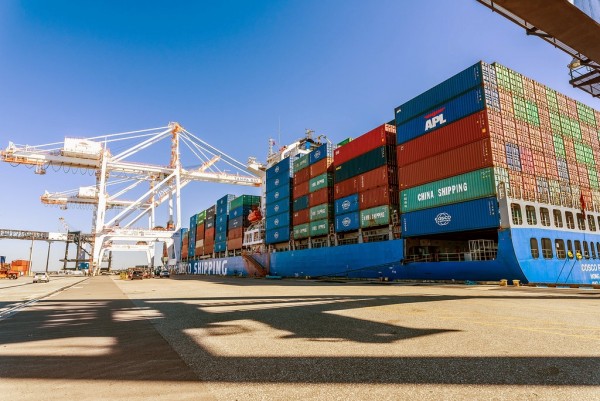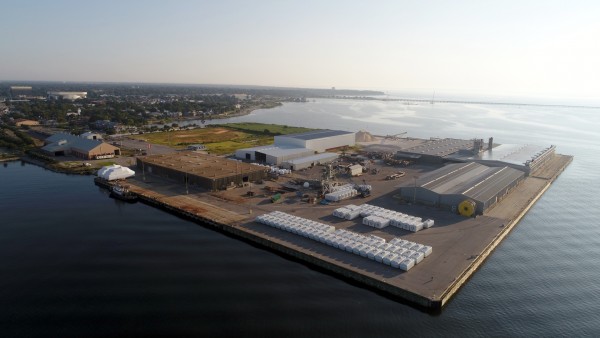Continuing a tradition of supporting a broad spectrum of functions, ports along the Gulf Coast of Florida are reaping benefits of increasing cargo activity in containerized, breakbulk and bulk sectors while serving as home base for such unusual activities as training of sailing crews and future landings of reusable space rockets.
Although the Sunshine State’s Central Panhandle suffered substantial damage as a result of last October’s Hurricane Michael, most of the region was fortunate to have not been significantly impacted by the third-most-intense Atlantic hurricane to ever make U.S. landfall.
Port Manatee
Situated near Tampa Bay’s entrance, Port Manatee is sustaining growth in cargo volumes, including handling a record 385,247 containerized tons in the fiscal year ended Sept. 30, 2018, up 6.1 percent over the preceding 12-month period.

Del Monte Fresh Produce, which has been operating at Port Manatee for more than three decades, keeps looking to Port Manatee as a hub for imports from Costa Rica and other Latin American countries of bananas, pineapples and melons destined for consumers throughout the U.S. Southeast. Meanwhile, World Direct Shipping, with global headquarters at Port Manatee, has entered its fifth year of service across the Gulf of Mexico between the states of Veracruz and Tamaulipas and Port Manatee. And Port Manatee is preparing to efficiently handle even more boxes for existing and new customers.
The diverse port also enjoyed record liquid bulk, dry bulk and breakbulk activity last year. In February, its newest tenant, Carver Maritime Manatee LLC, which has renovated a 10-acre cargo facility, brought its first shipment to Port Manatee, importing from Europe nearly 50,000 tons of raw material for cement manufacturing.
Port Tampa Bay
At Port Tampa Bay, Florida’s longtime leading tonnage port, containerized cargo action is kicking into high gear with the initiation of weekly service by Beijing-based China Ocean Shipping (Group) Co. bringing the port its first regular direct calls from Asia. Amidst much fanfare, the m/v COSCO Piraeus arrived Jan. 29 at Port Tampa Bay’s container terminal, operated by Ports America under a long-term agreement, and discharged boxes filled with such goods as furniture, construction materials, foods, beverages and textiles.

Port Tampa Bay officials say COSCO’s trans-Panama Canal service should facilitate savings of time and money for companies bringing goods from China to the dynamic Central Florida market, where distribution centers continue to sprout along the Interstate 4 corridor between Tampa and Orlando. On-port warehousing also has gotten a recent boost at Port Tampa Bay, with the opening last year of a 135,000-square-foot on-dock chilled storage facility by Tampa-based Port Logistics Refrigerated Services.
The heightened boxship activity buttresses Port Tampa Bay’s ongoing strength in handling of bulk and breakbulk commodities, including phosphates and steel, as well as home-porting of cruise vessels.
Port of Port St. Joe
Just as plans for rejuvenation of the Port of Port St. Joe seemed to be finally gathering momentum, Hurricane Michael slammed the Florida Panhandle in October, further delaying efforts that have been inching forward since the closure two decades ago of the St. Joe Co. paper mill and box plant that long served as anchor of the local economy.
Port St. Joe Port Authority officials, who on a positive note see the storm as having brought international attention to the Central Panhandle, remain hopeful that Panama City, Florida-based Eastern Shipbuilding Group Inc. will be able to move forward with erection of a floating dry dock at Port St. Joe, aided by the Triumph Gulf Coast oil spill settlement fund established following the 2010 Deepwater Horizon explosion.
Permits have been secured for a dredging project to bring the depth of the Port St. Joe channel to as many as 37 feet, while the site on which Arizona Chemicals closed its plant 10 years ago has been leased for hurricane recovery efforts centered on rebuilding of the area’s hurricane-ravaged electric power infrastructure.
Port Panama City
Port Panama City continues recovering from last fall’s Hurricane Michael impacts, with contracts in place to complete $15.5 million in permanent repairs over the next six months. While the storm damaged all of the Panama City Port Authority’s cargo warehouses and a number of its other buildings, plus many workers lost homes, no port or tenant employees were reported to have been physically injured. Also, the port’s cranes and bulkheads were not harmed by the 150-mph winds.

Within one week of Michael’s landfall, Port Panama City was able to resume vessel activity and initiate limited cargo-handling operations. Within two weeks, port employees and contractors had managed to make temporary repairs needed to resume full terminal services. The port is now operating at pre-storm levels of vessel and cargo activity.
Despite the hurricane-related challenges, Port Panama City was able to secure federal funding for its East Channel deepening project. It is also moving ahead with the construction of additional warehouse space at the new East Terminal, where a $10.8 million contract is advancing construction of a new 900-foot-long bulkhead and berth.
Port Pensacola
At the far west end of the Florida Panhandle, city-owned Port Pensacola was spared from Hurricane Michael destruction and continues to progress on a host of fronts.

World Direct Shipping is enjoying success with weekly containership service from Mexico that it brought to Port Pensacola in early 2018, while breakbulk and bulk cargo activity is reported to be on a modest upswing. A $2 million warehouse modification project to enhance heavylift service and fabrication capabilities for the offshore energy vessel industry was recently finished, and the first $2.5 million of repairs to the port’s Berth 6 are moving toward targeted midsummer completion as part of an overall $10 million to $12 million rehabilitation undertaking at that berth.
In addition, Port Pensacola has received a 600-foot-long vessel that is slated to begin serving by 2020 as a landing platform for reusable space rockets of Jeff Bezos’ Blue Origin, and the port is providing a training compound for the New York Yacht Club’s American Magic sailboat racing team.
in its preparations for the 36th America’s Cup events to take place in 2021.





